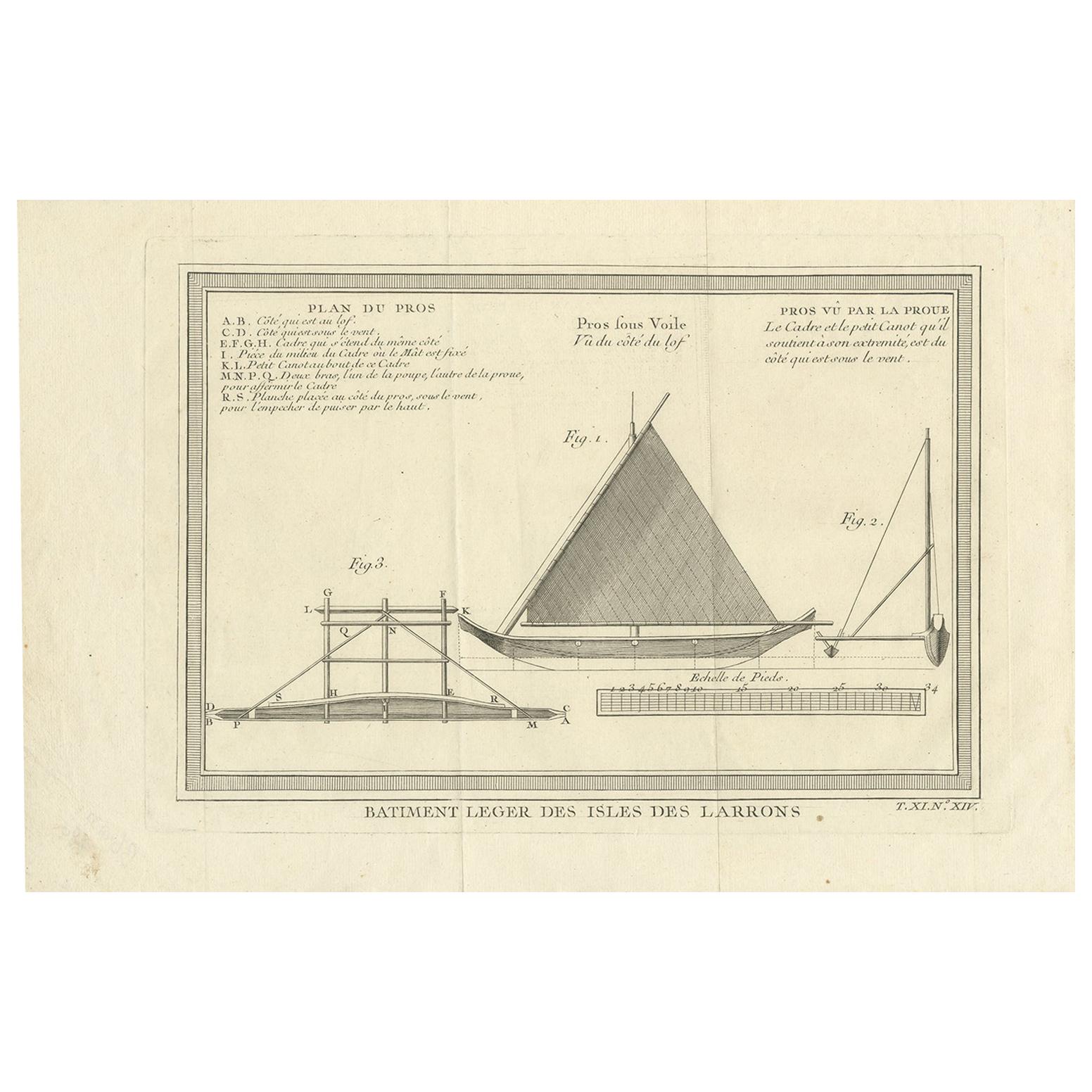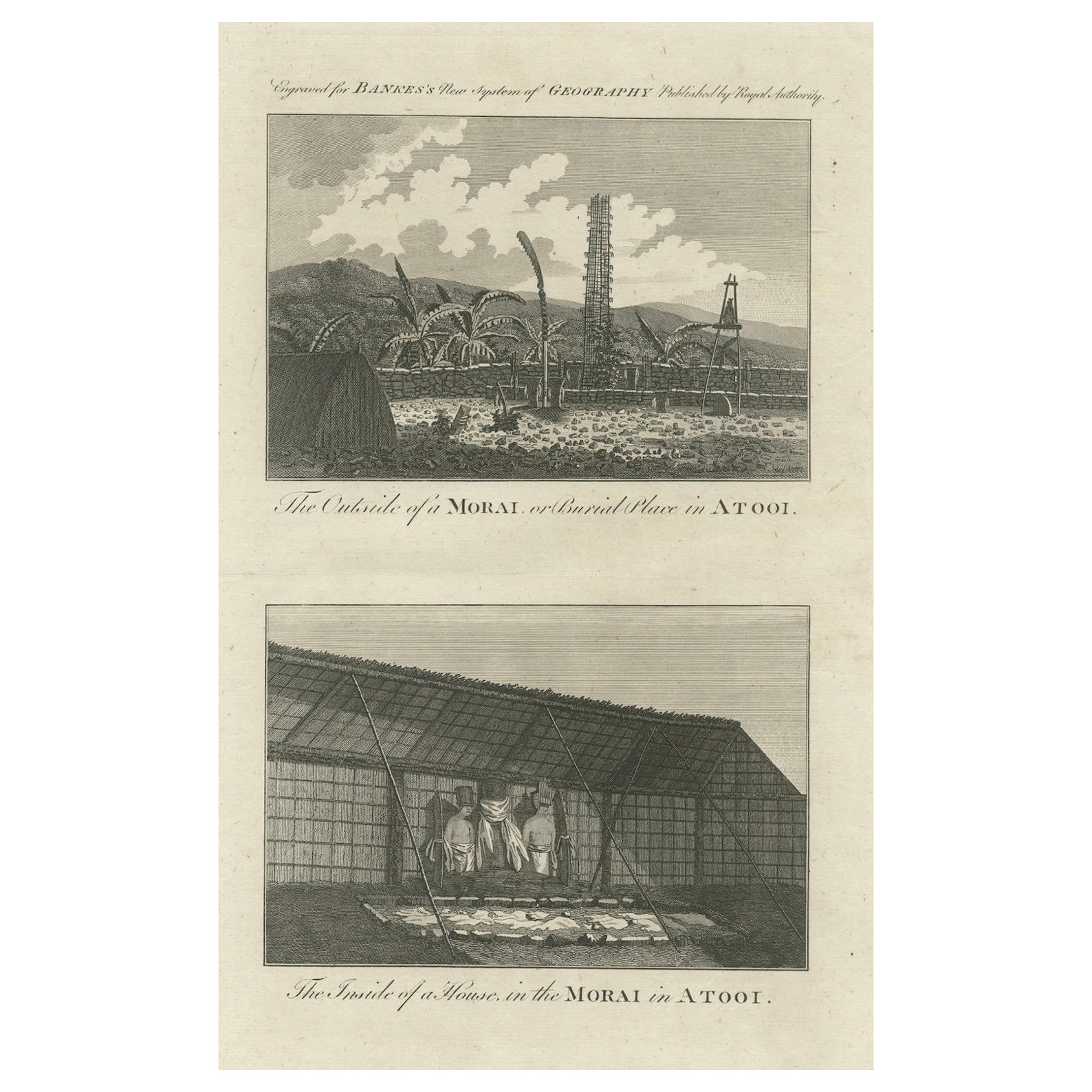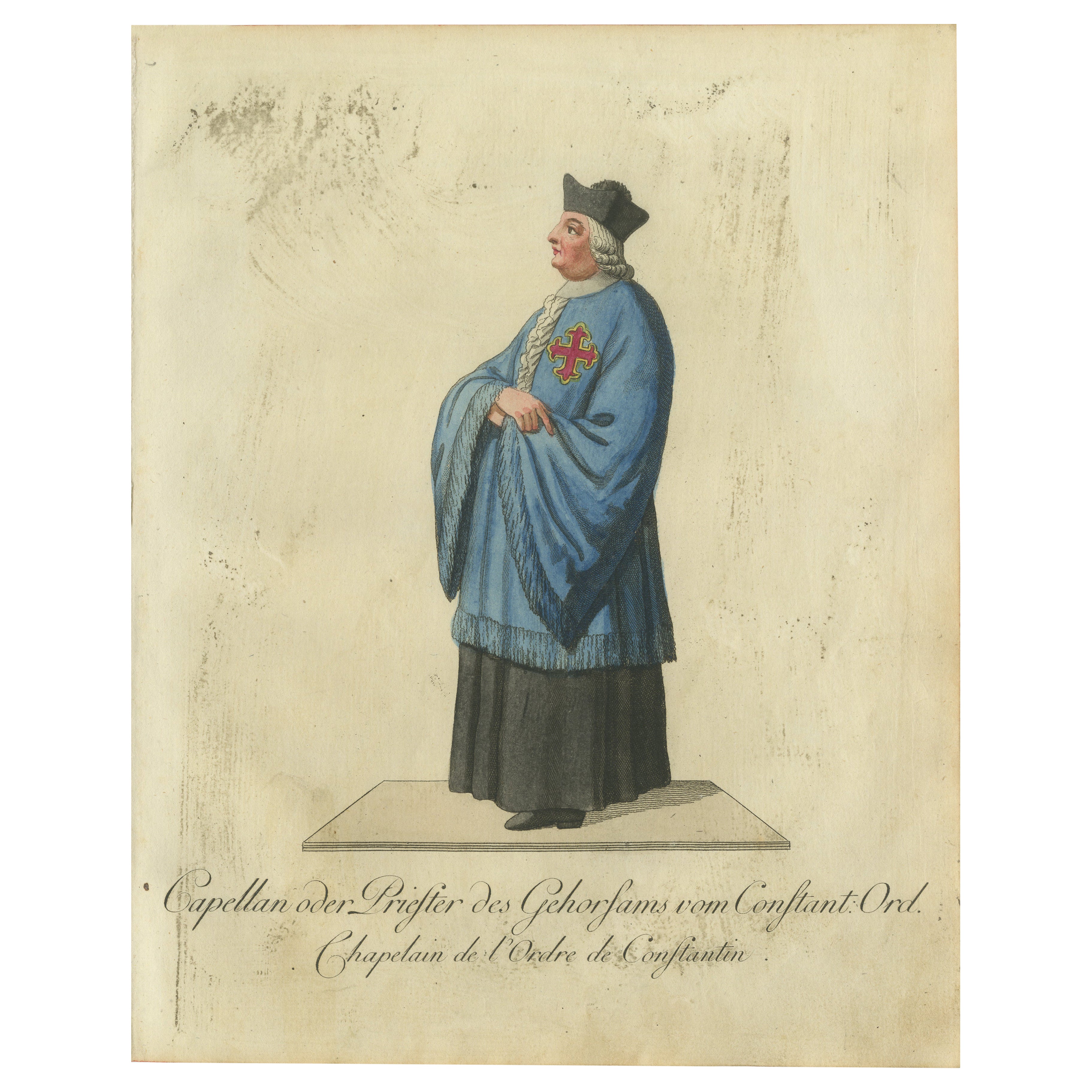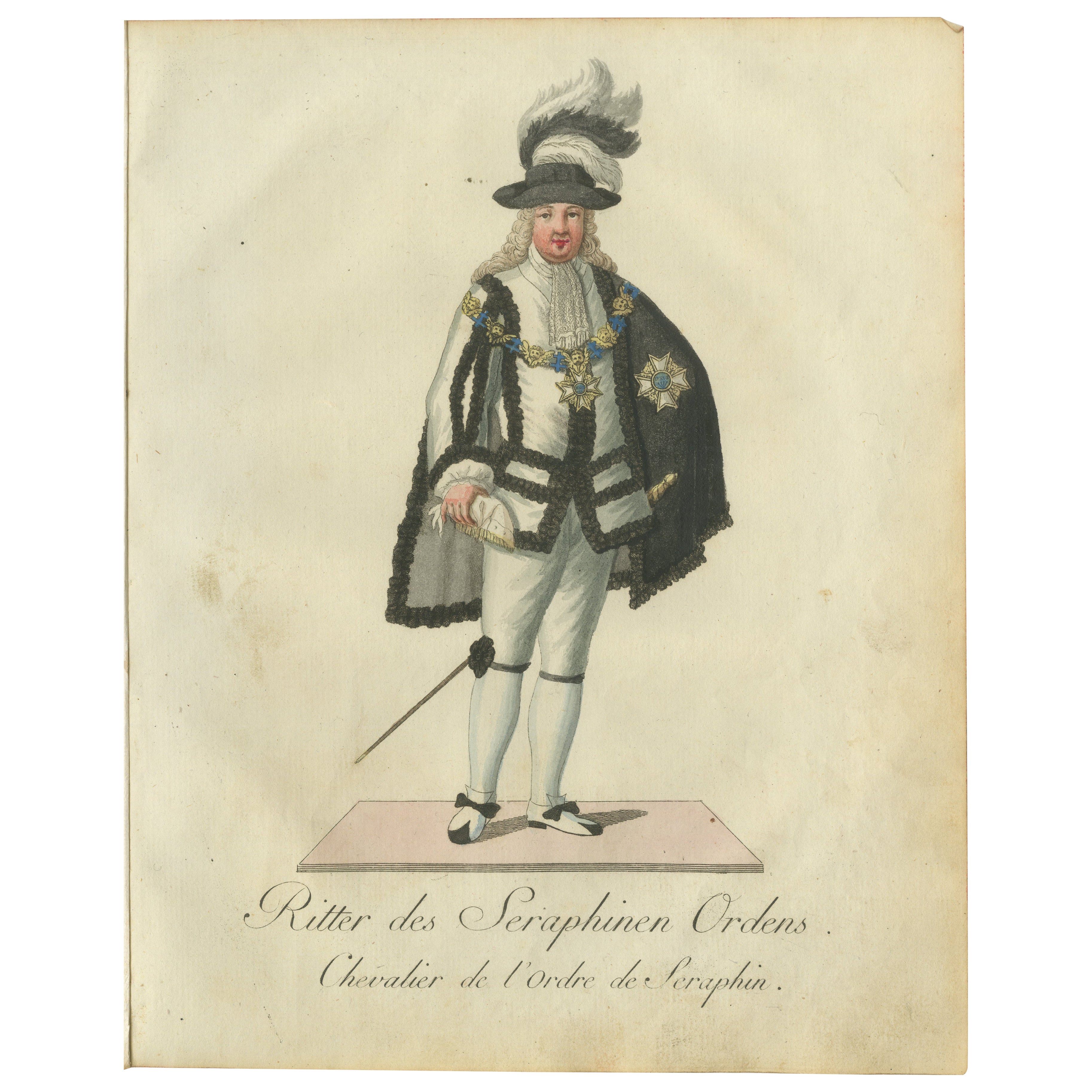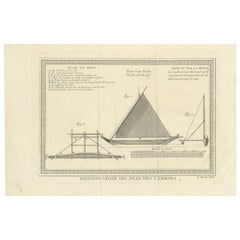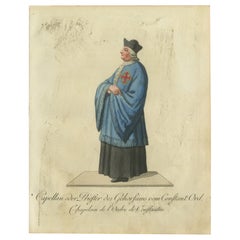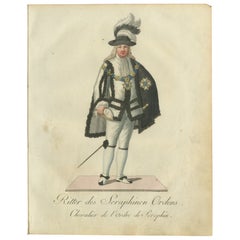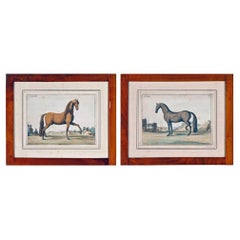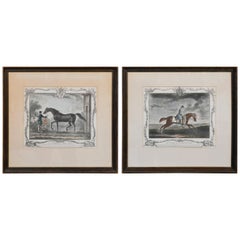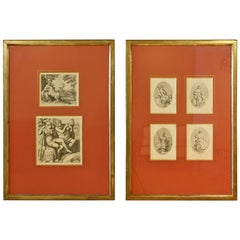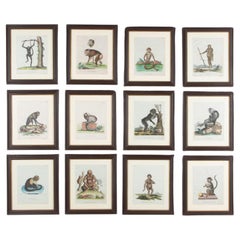Items Similar to Rare 18th-Century German Engraving of a Proa Sailing Canoe, c. 1780
Want more images or videos?
Request additional images or videos from the seller
1 of 10
Rare 18th-Century German Engraving of a Proa Sailing Canoe, c. 1780
About the Item
Rare 18th-Century German Engraving of a Proa Sailing Canoe, c. 1780
This finely detailed 18th-century engraving offers a technical depiction of a traditional proa, a type of sailing canoe originating from the Pacific Islands, particularly Micronesia. Proas are known for their distinctive asymmetrical hull design and outrigger, allowing for remarkable speed and maneuverability when navigating the open seas. This print is an exceptional representation of European fascination with indigenous maritime engineering during the Age of Exploration.
The engraving is executed with precision, utilizing line engraving techniques that render clear and accurate lines, ideal for conveying the structural details of the vessel. The image is composed of three primary views: the side view under sail, the bow view, and a detailed plan of the outrigger construction. The sail, depicted in a triangular shape, is set on a single mast and angled sharply to catch the wind efficiently. The hull is sleek and elongated, with a balanced, lightweight structure designed to reduce drag in the water. The accompanying outrigger, shown in a separate cross-sectional view, highlights the supporting framework essential for stabilizing the canoe, particularly when sailing windward.
The print is accompanied by descriptive text in German, labeling the various components and explaining their functions. Phrases like "Proa vom Vordertheile" and "Abriss von einem Proa" indicate that the illustration was intended to educate European audiences on the unique naval architecture of these exotic vessels. A scaled ruler is also included at the bottom, further emphasizing the technical and educational intent of the print.
One of the most captivating aspects of this engraving is its historical context. During the 18th century, European explorers were increasingly encountering and documenting the ingenious maritime practices of Pacific Islanders. The proa, with its ability to rapidly change direction without turning around, fascinated European sailors and engineers alike. This engraving not only captures the ingenuity of the proa design but also serves as a testament to the admiration and curiosity sparked by indigenous craftsmanship.
Condition report: The condition of the print is generally good, with some light creasing along the centerfold and minimal foxing. The paper has aged gracefully, retaining a warm, natural patina that enhances its antique appeal.
Framing tips: To preserve and display this rare piece, consider framing it in a simple, understated frame with an acid-free mat, ensuring the nautical and historical essence remains the focal point.
It is recommended to use a matting board in a muted, neutral color to complement the age and tone of the print. Here are a few great options:
1. Warm Cream or Ivory - These colors reflect the natural aging of the paper and create a harmonious, classic look without overwhelming the delicate lines of the engraving.
2. Light Taupe or Beige - These colors enhance the warm patina of the antique paper and create a subtle contrast that draws attention to the print.
3. Light Gray or Stone Gray - A cool, understated gray can provide a sophisticated contrast, emphasizing the precision of the line work while maintaining an elegant presentation.
4. Antique White - A slightly off-white color that echoes the paper's natural tone, giving the presentation a soft, vintage feel.
Avoid overly bright whites or bold colors, as they can clash with the print’s aged look. A double mat with a thin inner border in a slightly darker shade (like a medium gray or soft brown) can also add depth without detracting from the artwork.
For the frame itself, a dark wood or simple black frame will balance nicely with the muted matting, giving a timeless and scholarly appearance.
- Dimensions:Height: 9.3 in (23.6 cm)Width: 14.97 in (38 cm)Depth: 0.01 in (0.2 mm)
- Materials and Techniques:Paper,Engraved
- Period:1780-1789
- Date of Manufacture:circa 1780
- Condition:The condition is generally good, with some light creasing along the centerfold and minimal foxing. The paper has aged gracefully, retaining a warm, natural patina that enhances its antique appeal. Folding lines as issued and tight left margin.
- Seller Location:Langweer, NL
- Reference Number:Seller: BG-043401stDibs: LU3054344138742
About the Seller
5.0
Recognized Seller
These prestigious sellers are industry leaders and represent the highest echelon for item quality and design.
Platinum Seller
Premium sellers with a 4.7+ rating and 24-hour response times
Established in 2009
1stDibs seller since 2017
2,417 sales on 1stDibs
Typical response time: <1 hour
- ShippingRetrieving quote...Shipping from: Langweer, Netherlands
- Return Policy
Authenticity Guarantee
In the unlikely event there’s an issue with an item’s authenticity, contact us within 1 year for a full refund. DetailsMoney-Back Guarantee
If your item is not as described, is damaged in transit, or does not arrive, contact us within 7 days for a full refund. Details24-Hour Cancellation
You have a 24-hour grace period in which to reconsider your purchase, with no questions asked.Vetted Professional Sellers
Our world-class sellers must adhere to strict standards for service and quality, maintaining the integrity of our listings.Price-Match Guarantee
If you find that a seller listed the same item for a lower price elsewhere, we’ll match it.Trusted Global Delivery
Our best-in-class carrier network provides specialized shipping options worldwide, including custom delivery.More From This Seller
View All18th Century Engraving of a Chamorro Proa from the Mariana Islands (1753)
Located in Langweer, NL
The print titled "Batiment Leger des Isles des Larrons" is an antique engraving depicting a proa, a type of outrigger canoe, from the Ladrones Island...
Category
Antique Mid-18th Century Prints
Materials
Paper
$139 Sale Price
20% Off
18th-Century Engraving of Hawaiian Morai and House Interior, c. 1780s
Located in Langweer, NL
This finely executed engraving, titled "The Outside of a Morai, or Burial Place in Atooi" and "The Inside of a House, in the Morai in Atooi," offers a fascinating depiction of Hawaii...
Category
Antique 1780s Prints
Materials
Paper
Chaplain of the Constantinian Order: A Rare Hand-Coloured 18th-Century Engraving
Located in Langweer, NL
Title: Chaplain of the Constantinian Order: A Rare 18th-Century Engraving
Description: This hand-colored engraving depicts a "Capellan oder Priest...
Category
Antique 1790s Prints
Materials
Paper
Knight of the Seraphim Order: Rare 18th-Century Engraving of Swedish Nobility
Located in Langweer, NL
Knight of the Seraphim Order: Rare 18th-Century Engraving of Swedish Nobility
This hand-colored engraving showcases a "Ritter des Seraphinen Ordens" (Knight of the Seraphim Order)...
Category
Antique 1790s Prints
Materials
Paper
Knight of the Holy Virgin Mary: Rare Hand-Colored 18th-Century Engraving
Located in Langweer, NL
Title: Knight of the Holy Virgin Mary: Rare Hand-Colored 18th-Century Engraving
Description: This exquisite hand-colored engraving portrays a "Ritter der heiligen Jungfrau Maria" (K...
Category
Antique 1790s Prints
Materials
Paper
18th Century Ethnological Engravings of Peruvians and Ecuadorians
Located in Langweer, NL
Title: 18th Century Ethnological Engravings of Peruvians and Ecuadorians
Description: These two 18th-century engravings, printed in 1756, are detailed depictions of the social and cultural life in Peru and Ecuador during the colonial era. Created by Quentin-Pierre Chedel (1705–1762), they are part of *Histoire générale des voyages* by Antoine François Prévost, a monumental collection that documented the world's exploration and cultural encounters.
First Engraving (Residents of Peru):
This print illustrates the residents of Lima, Peru, highlighting the various social classes and ethnic groups present in the region during the colonial period. The detailed engraving captures:
A. Femme de Lima en Habit de Ville – A woman from Lima in formal city dress, representing the elite of society.
B. Femme en Habit de Ménage – A woman in household dress, typical of a middle or upper-class domestic attire.
C. Espagnol vêtu comme on l’est au Pérou – A Spanish man dressed as one would in Peru, showing the influence of Spanish colonial fashion on local attire.
D. Mulatresse – A woman of mixed African and European descent, reflecting the diverse ethnic makeup of colonial Peru.
E. Nègre Domestique – A domestic servant of African descent, showcasing the role of enslaved individuals in colonial households.
The scene is set in a lush, natural landscape, with attention to the differences in social standing and attire.
Second Engraving (Residents of Quito, Ecuador):
The second engraving, although similar in style, depicts residents of Quito, Ecuador, and provides an ethnological view of the city’s diverse inhabitants. The composition shows:
1. Espagnole de Quito – A Spanish woman of high status, dressed elegantly, representing the colonial upper class in Quito.
2. Indienne de Distinction – An Indigenous woman of notable status, likely representing the local nobility or important community figures.
3. Barbier Indien – An Indigenous barber, reflecting the occupational diversity and social roles of the Indigenous population in colonial society.
4. Métive de Quito – A Métis woman from Quito, showing the mixed-race population that emerged during the colonial era.
5. Paysan Indien – An Indigenous farmer, indicating the essential role of agriculture and rural labor in the economy of colonial Ecuador.
6. Indienne du Commun – A common Indigenous woman, dressed in traditional attire, representing the majority of the Indigenous population.
Like the first engraving, this print captures the varied ethnic and social dynamics in a colonial society, with figures placed in a landscape setting, emphasizing the connection between people and their environment.
These engravings are not only artistic representations but also important historical records of colonial Latin America...
Category
Antique Mid-18th Century Prints
Materials
Paper
You May Also Like
Pair of 18th Century Engravings of Horses
Located in Downingtown, PA
Each print is mounted in a cherrywood parcel-gilt frame, with a glazed reverse depicting the corresponding text sheet.
L'Andaloux, Le Cheval d'Espagne, Plate I;
Le Barbe, Le Che...
Category
Antique Mid-18th Century French Georgian Prints
Materials
Paper
$3,750 / set
18th Century Pair of English Engravings
Located in Dallas, TX
Superb pair of 18th century English engravings.
Category
Antique 18th Century English Decorative Art
$2,035 / set
Framed Set of 18th Century Classical Engravings
Located in Pembroke, MA
Two French matted and framed 18th century black and white engravings inspired by Classical Antiquity. The first frame contains an engraving of a woman patting a unicorn, and a man an...
Category
Antique 18th Century French Classical Greek Prints
Materials
Giltwood, Paper
$3,500 Sale Price / set
20% Off
Set of Twelve 18th Century Zoological Engravings
Located in Shipston-On-Stour, GB
A rare 18th Century set of 12 handcoloured copperplate engravings of Zoological studies, featuring primates of varying species. Each colourfully executed with a naive charm, and Lati...
Category
Antique 1770s German Other Prints
Materials
Glass, Wood, Paint, Paper
18th Century Framed Fashion Engraving
Located in Vista, CA
18th century framed fashion engraving.
Category
Antique Mid-18th Century European Prints
Materials
Paper
Set of Four 18th Century Frames with Saint Engravings by German Klauber
Located in Milano, MI
A set of four frames with Klauber 18th century engravings within stunning rectangular frames in gold-leaf gilded wood with lapis lazuli blue color paper inserts in the external profile, with gold decorations.
Under the original glass we find the effigies of Saints Ambrose...
Category
Antique Late 18th Century German Neoclassical Prints
Materials
Glass, Giltwood, Paper
